Teaching Resources
Expanded Course Descriptions
The New Brunswick Faculty Council has approved a recommendation requiring an Expanded Course Description for all courses in the University Schedule of Courses. This page will help instructors and department administrators develop and post Expanded Course Descriptions.
Expanded Course Descriptions should be posted to the Online Schedule of Classes when registration begins for the upcoming term. (Syllabi should all be posted on the department’s own website by the first day of class.)
What to include in your Expanded Course Description:
Click each item for more information. We have also provided a downloadable checklist.
Required Minimum Contents:
Course Title and Academic Credits
Include the course title (and course number) as they appear in the Schedule of Classes, including all crosslisted sections, and how many academic credits the course is worth.
For example, for a cross-listed course:
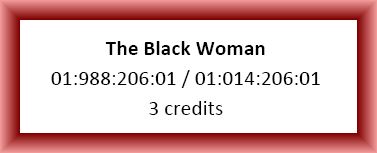
Mode of Instruction
Indicate the course mode of instruction (Lecture, Laboratory, On-Line, Seminar, etc.).
For example, from the description for 11:375:101:

or

Course Prerequisites
List any prerequisites necessary for the course, and/or alternatives such as placement testing.
For example, from E. Bryant’s syllabus for 01:840:426:

Catalog Course Description
Include the catalog course description, available from the Current Catalog.
For example, from the Physics Department Course Descriptions:

Learning Goals of Course
Learning goals should be included for every course, and in general, how they will be assessed. Courses may have individualized learning goals, or learning goals that dovetail with the area/department or unit. For example, some courses may be certified as meeting SAS Core Curriculum Learning Goals or SAS Departmental Learning Goals.
For example, from E. Mitchell’s syllabus for 01:920:306:
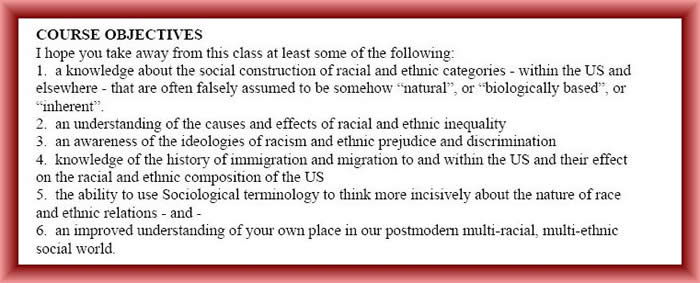
Required and Recommended Course materials (i.e., textbooks, including all ISBN numbers)
List all required and any recommended course materials, including all ISBN numbers (required) and specific edition information (if pertinent). You are required by University policy to place book orders at the University Bookstore on your campus (Barnes & Noble for New Brunswick and Newark; Follett for Camden). You may also arrange with other local vendors to stock your books, or students may shop online for the best prices. If the reading list includes works that are in the public domain (including all books published prior to 1923; review this copyright chart for more detail) you may include links to free editions at Project Gutenberg, Archive.org, or other ebook distributors. Some courses require the students to purchase additional materials such as lab supplies, art supplies, specialized software, etc. These should be listed, along with possible locations for purchase. If you require your students to use specific software such as MatLab or SPSS, check the university software licenses to see if students are eligible for free downloads or reduced pricing. OIT has also made some statistics packages available for remote use.
For example, from M. Porow’s syllabus for 01:920:108:
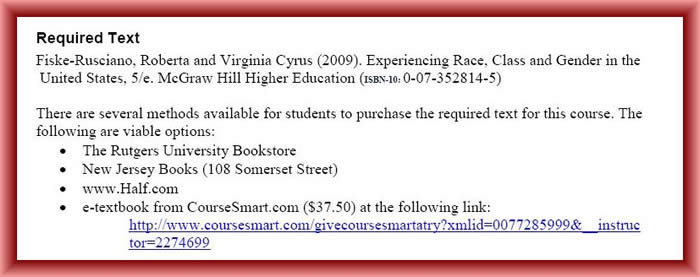
Policies for Exams, Assignments, Attendance, and Grading
Include dates and grade distribution/percent value of exams and assignments; any policies on missed or late assignments and make-up exams; any policies on graded attendance, recitations sections, labs, etc.; and any required academic-integrity checking services (e.g., Turnitin, Proctortrack).
For example, from K. Bishop’s syllabus for 01:840:112:

Or from M. Mappen’s syllabus for 01:506:402:
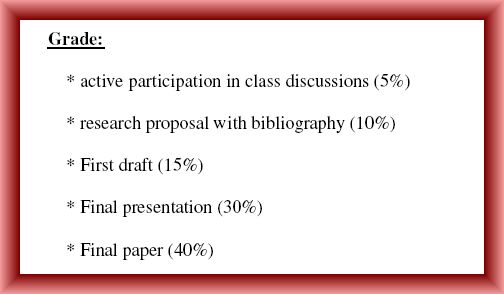
Or from S. Haviland’s syllabus for 01:512:104:
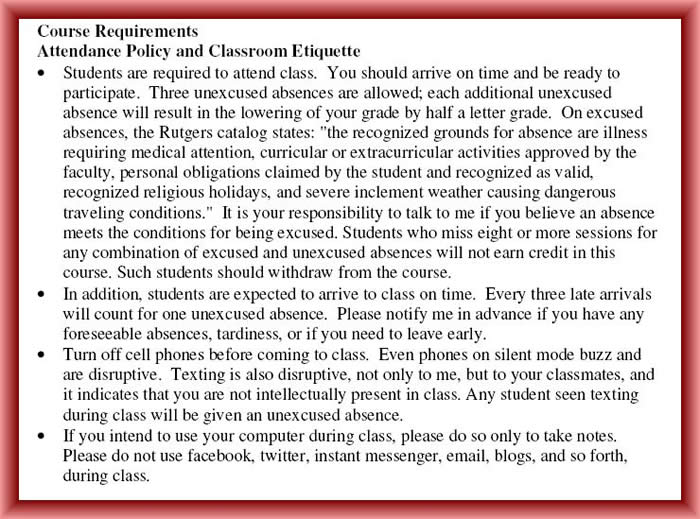
Faculty contact information
For each instructor and teaching assistant include at least one of the following: phone, email, web page, fax, postal address. Office hours and location may also be included. At the time the Enhanced Course Description is posted, full instructor information may not be available (for example, due to scheduling constraints). In cases such as these, a departmental contact should be provided, and the Enhanced Course Description should indicate that specifics are subject to instructor discretion and will be provided by the first day of class.
For example, from B. Castellano’s syllabus for 37:533:322:01:
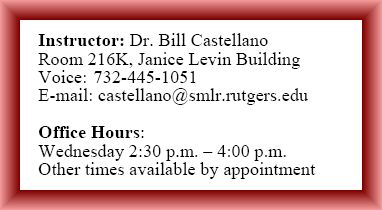
Link to any course website that has additional useful information
Include any relevant links. In particular, link to the current Academic Integrity Policy and direct students to a plagiarism policy such as the Writing Program’s, the Camden Plagiarism Tutorial, or Don’t Plagiarize! Document Your Research.
For example, from Brill, Gunderson, & Kusch’s syllabus for 01:694:408:

Or from A. Devine-Eller’s syllabus for 01:920:101:

There are many other possible relevant links. Some instructors might wish to link to the Rutgers Libraries; the academic calendar or final exam schedule; the University attendance policy, interfaith calendar and NJ Department of Education list of religious holidays; Rutgers Maps; academic support resources such as the Rutgers Learning Centers; the Office of Disability Services; the department; sites relevant to the discipline or course content; etc.
How to Link your Expanded Course Description to the University Schedule of Classes
Please note:
- This process is only open to authorized users, which in most departments is a departmental secretary or administrative assistant who also posts the course schedule itself.
- The system has been designed so that only one link can be entered for each program code. This requires that each department have one website or web page with all the Enhanced Course Descriptions available.
Steps to link Enhanced Course Descriptions to the Online Schedule of Classes:
- A user authorized by the Scheduling office should go to: https://sims.rutgers.edu/fco/schedule/synopsis.htm and log-in with his or her NetID
- The authorized user types in the School Code and Department or Program Code for the department in question (for example 01:920 for SAS Sociology).
- The authorized user then pastes or types in URL the department’s enhanced course description website or web page.
Further Resources
- Syllabus Design
- New Brunswick Faculty Council Proposal for Required Expanded Course Descriptions
- American Council on Education’s Analysis of Higher Education Act Reauthorization (see Analysis pdf, p.5 section “Textbook Cost Containment”)

